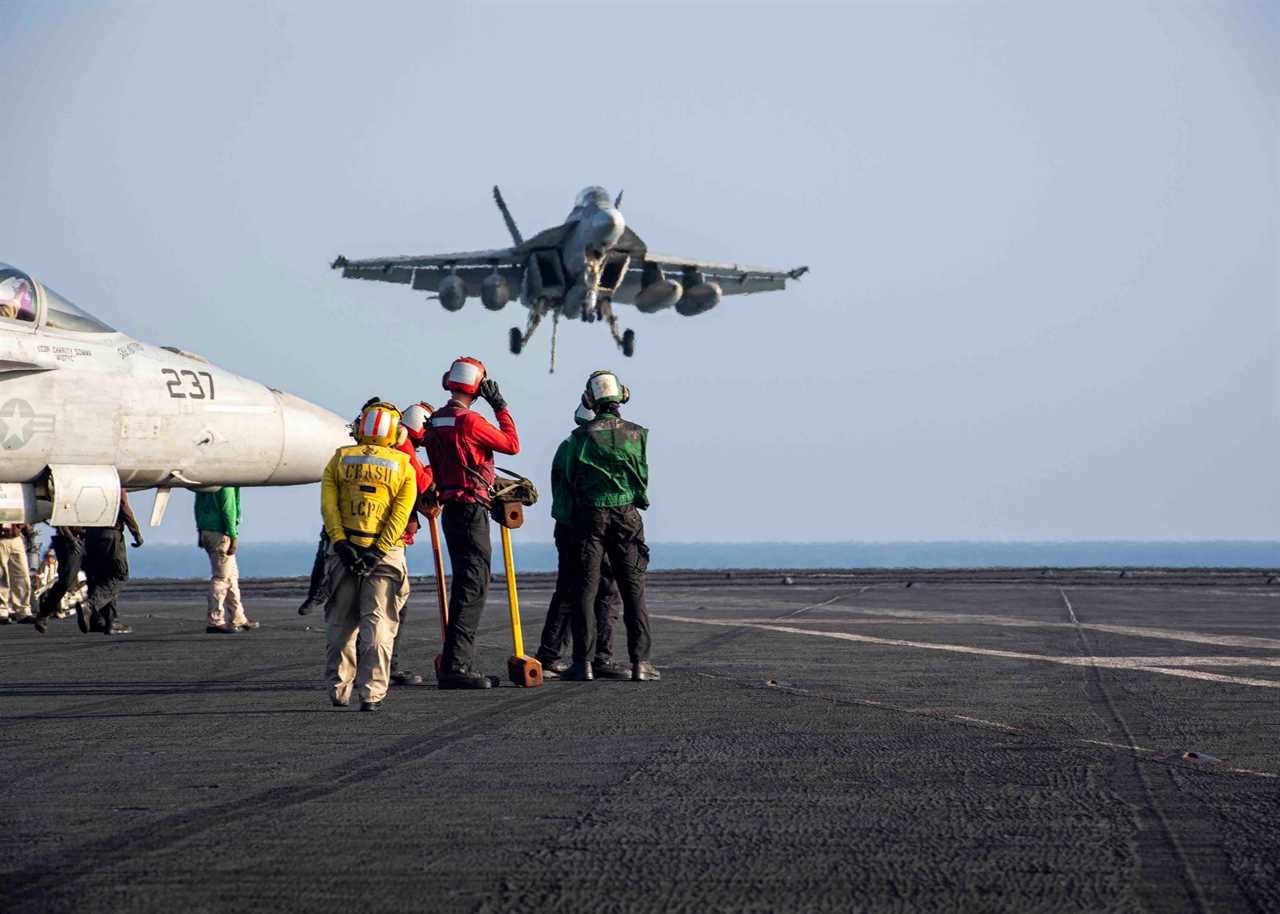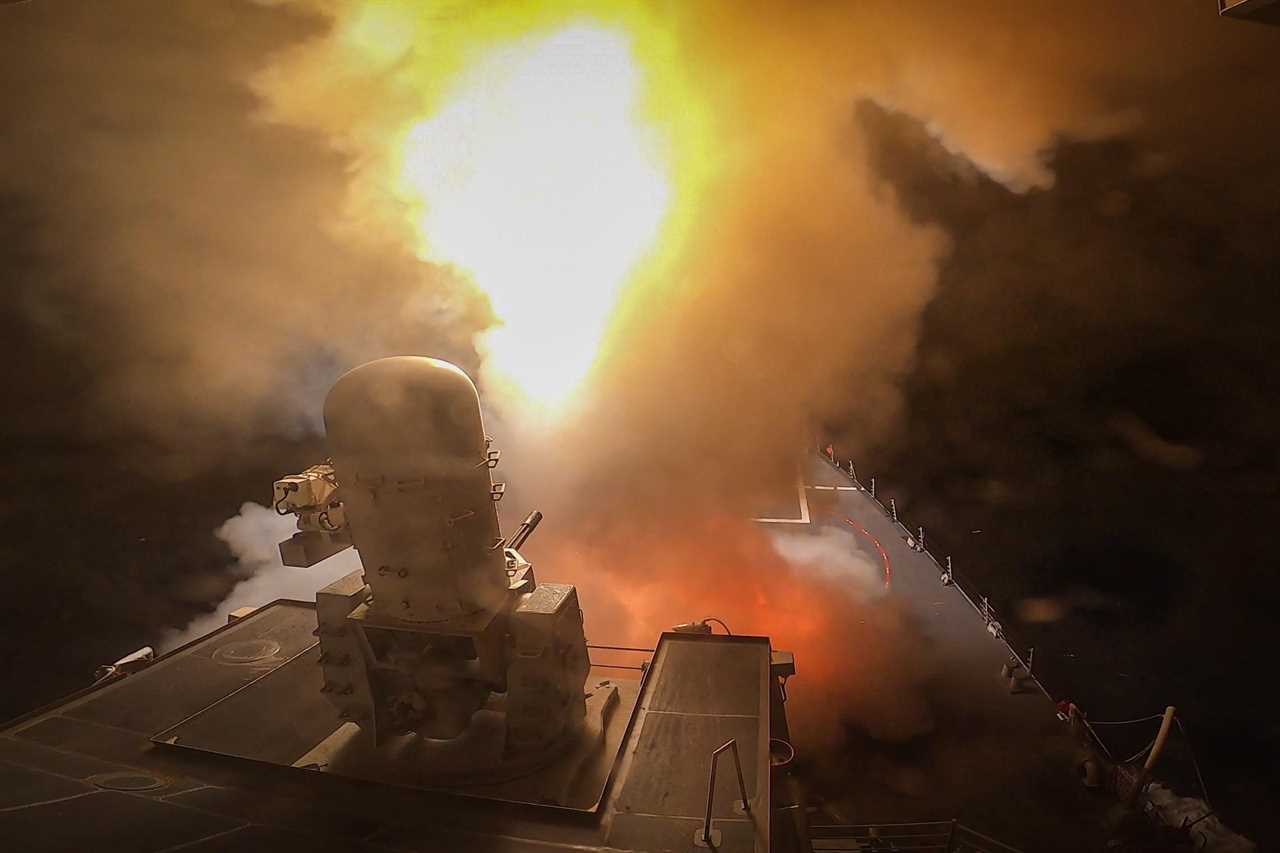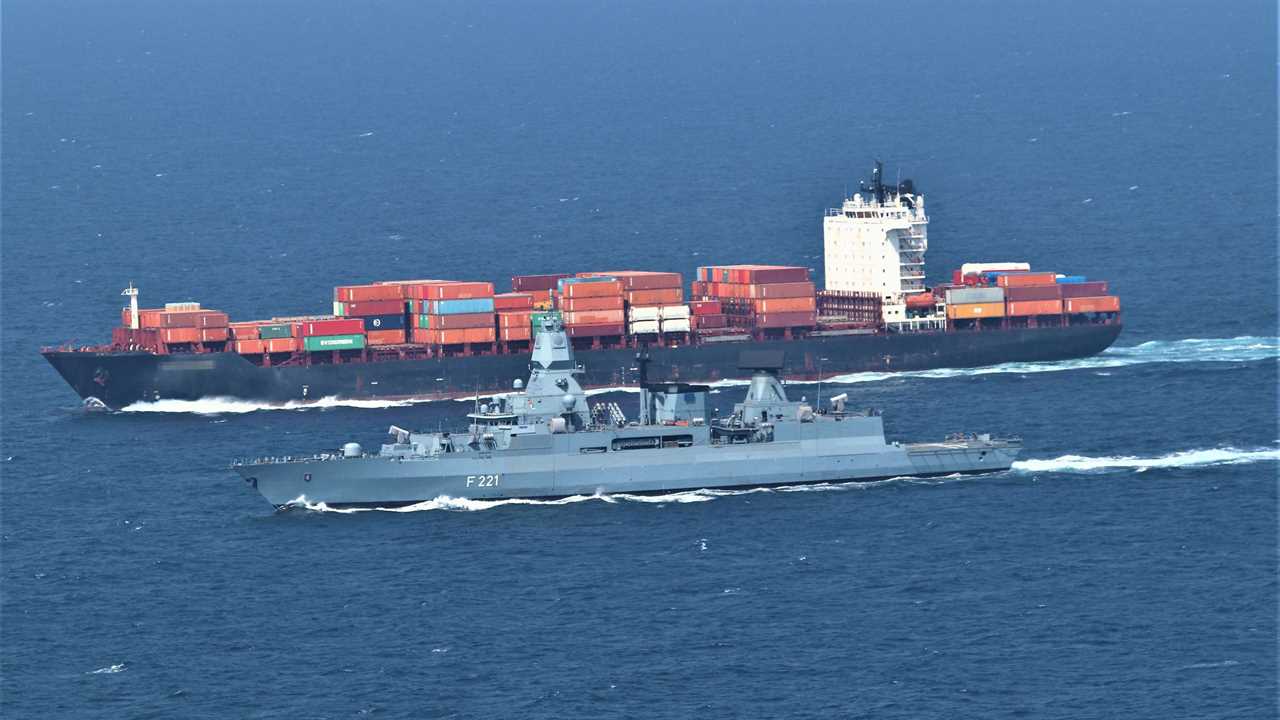US Navy photo
- The US Navy's Dwight D. Eisenhower Carrier Strike Group has spent months battling the Houthis.
- In their fight, the American naval forces have expended more than 500 munitions.
- These include air-launched weapons and missiles fired from warships, according to Navy officials.
The US Navy carrier strike group battling the Houthis in the Red Sea has fired more than 500 munitions throughout its deployment, striking the rebels directly in Yemen and intercepting their missiles and drones.
The Dwight D. Eisenhower Carrier Strike Group — which consists of the aircraft carrier Ike and several other warships — has spent months defending the key shipping lanes in the Red Sea and Gulf of Aden from unrelenting Houthi attacks.
In their attacks, the rebels, backed by Iran, have employed a dangerous mix of anti-ship ballistic and cruise missiles, one-way attack drones, and uncrewed surface vessels.
As part of the ongoing effort to counter these attacks, the US strike group has so far gone after nearly 430 pre-planned and dynamic Houthi targets in dozens of self-defense actions, according to new information Navy officials provided to Business Insider.
These targets include static Houthi facilities and sites located across Yemen, missiles and drones the rebels were preparing to launch at ships at sea, and weapons that they already fired into shipping lanes. The strike group has leaned on its aircraft and warships to engage targets and defend against varying threats.

US Navy photo
The Eisenhower's air wing, which includes aircraft like F/A-18 Super Hornet fighters and EA-18 Growler jets, has been involved in the release of more than 350 air-to-surface weapons and over 50 air-to-air missiles, according to the officials. Aircraft from the strike group have flown more than 27,200 hours across over 12,100 sorties.
Navy guided-missile cruisers and destroyers, meanwhile, have launched more than 100 Standard and Tomahawk missiles (surface-to-air and land-attack missiles, respectively), the officials said.
But these munitions aren't cheap; a single Standard Missile-2 interceptor, for instance, is estimated to cost around $2 million. With engagements happening on a consistent basis since the fall, the expenditure of so many missiles has added up over time.
Secretary of the Navy Carlos Del Toro disclosed in April that the Navy had already fired nearly $1 billion's worth of missiles to counter the Houthis over the previous six months, underscoring the depth and growing financial cost of the US naval activity in the region.

US Navy photo by Mass Communication Specialist 2nd Class Aaron Lau
The Navy's Red Sea operations have often raised questions about financial sustainability and the replenishment of all the spent munitions, especially as malign Houthi activity shows no signs of letting up anytime soon, Director of National Intelligence Avril Haines told US lawmakers earlier this month.
On Wednesday, US forces destroyed four Houthi drones in Yemen that the military had determined presented an "imminent threat" to American and coalition forces, as well as merchant vessels, in the region.
US forces are not alone in these turbulent Middle Eastern waters. Several other countries have deployed warships to the region as part of the European Union's Operation Aspides security mission, which began in February.
During the first three months of the operation, European forces destroyed at least four Houthi ballistic missiles and 13 drones, the security mission announced on Sunday. It is unclear how many munitions the participating warships and their supporting aircraft fired.

German military photo
The significant Western naval presence has successfully defended ships from the majority of the many Houthi attacks, but the Pentagon and its allies continue to face pressure as the rebels retain the capacity to land hits on merchant vessels, as they did just last weekend.
"It is true that [the Houthi attacks] continue," a senior US defense official told reporters earlier this week. "It is also true that we feel, through our coalition strikes, we degraded their capability. We've also interdicted weapons that have been shipped to them for resupply."
"But this is not a resolved issue yet," the official acknowledged. "It's also an issue that really is a global concern."
Read More
By: [email protected] (Jake Epstein)
Title: A US Navy carrier strike group locked in a Red Sea battle has fired over 500 munitions fighting the Houthis
Sourced From: www.businessinsider.com/us-navy-carrier-strike-group-fighting-houthis-fired-hundreds-munitions-2024-5
Published Date: Thu, 23 May 2024 19:42:34 +0000
Did you miss our previous article...
https://trendinginbusiness.business/business/5-women-to-follow-if-you-want-to-learn-about-money-and-build-wealth
.png)





